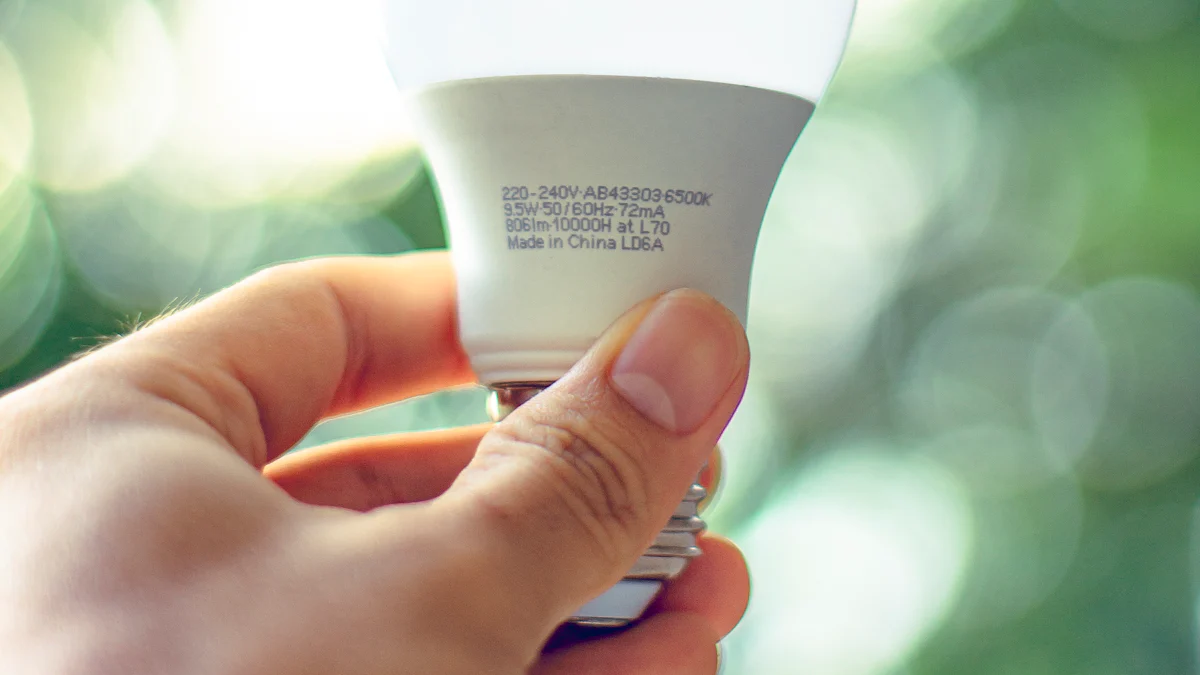
LED work lights have revolutionized the lighting industry with their efficiency and safety features. Understanding how these lights operate, including their heat generation, is crucial for users. This blog will delve into the mechanisms behind LED light technology, explaining why they produce minimal heat compared to traditional bulbs. By exploring factors influencing heat in LED work lights and comparing them with other types, readers will gain valuable insights into choosing the right LED light for their needs.
Understanding LED Technology
LED technology operates on basic principles that distinguish it from traditional lighting sources. The energy efficiency of LED lights is a standout feature, ensuring optimal performance while minimizing energy consumption.
How LEDs Work
- Basic principles of LED operation
- Electrons and electron holes recombine in the semiconductor, releasing energy in the form of photons.
- This process creates light emission without generating excessive heat, unlike incandescent bulbs.
- Energy efficiency of LEDs
- LEDs consume significantly less energy than incandescent lamps, making them a cost-effective and eco-friendly choice.
- Research indicates that high-quality LED lamps can achieve up to 75% greater energy efficiency compared to traditional bulbs.
Heat Generation in LEDs
- Why LEDs produce less heat than traditional bulbs
- The efficient conversion of electrical energy into light minimizes heat production within the LED structure.
- This characteristic not only enhances safety but also prolongs the lifespan of the LED light.
- Mechanisms of heat dissipation in LEDs
- Heat sinks integrated into LED designs effectively dissipate any generated heat, maintaining optimal operating temperatures.
- By efficiently managing heat, LEDs ensure consistent performance and durability over time.
Factors Affecting Heat in LED Work Lights

Design and Build Quality
Role of heat sinks and materials used
- Heat sinks play a crucial role in maintaining the optimal temperature of LED lights by dissipating excess heat efficiently.
- The materials utilized in the construction of LED work lights significantly impact their ability to manage heat effectively.
Impact of design on heat management
- The design of an LED work light directly influences its heat dissipation capabilities, ensuring prolonged performance and durability.
- By optimizing the design, manufacturers enhance the overall efficiency and safety of the LED light.
Usage and Environment
Effect of prolonged usage
- Prolonged usage can gradually affect the heat generation of LED work lights, potentially impacting their performance over time.
- Regular maintenance and monitoring are essential to mitigate any adverse effects from extended operation periods.
Influence of ambient temperature
- The surrounding ambient temperature can influence how an LED work light manages heat, affecting its overall efficiency.
- Users should consider environmental conditions when utilizing LED lights, optimizing their performance based on ambient temperatures.
Comparing LED Work Lights with Other Types

Incandescent Work Lights
Heat production in incandescent bulbs
- Incandescent bulbs produce light by heating a filament wire until it glows. This process generates a significant amount of heat, which is why these bulbs can get very hot during operation.
- The heat produced by incandescent bulbs is a result of the inefficiency in converting electricity into light. This inefficiency leads to more energy being wasted as heat rather than being used for illumination.
Efficiency comparison
- LED lights are known for their high energy efficiency compared to incandescent bulbs. They convert a larger percentage of electricity into light, minimizing heat generation and energy wastage.
- When comparing the efficiency of LED lights with incandescent bulbs, studies have shown that LED lights consume significantly less power while providing the same or even better illumination levels.
Halogen Work Lights
Heat production in halogen bulbs
- Halogen bulbs operate similarly to incandescent bulbs but contain a halogen gas that allows the filament to last longer. However, this design still results in considerable heat production during use.
- The heat generated by halogen bulbs is due to the high operating temperatures required for the halogen cycle to function effectively, contributing to their overall warmth during operation.
Efficiency comparison
- LED lights outperform halogen bulbs in terms of energy efficiency and heat generation. By emitting light without excessive heat, LED lights offer a safer and more cost-effective lighting solution.
- Studies have indicated that LED lights have a longer lifespan and consume less power than halogen bulbs, making them an environmentally friendly alternative with superior performance.
Practical Tips for Managing Heat in LED Work Lights
Choosing the Right LED Work Light
When selecting an LED light for your workspace, focus on specific features that enhance heat management and overall performance. Consider the following aspects to ensure optimal functionality:
- Prioritize LED lights with advanced heat dissipation technology to maintain a cool operating temperature.
- Look for models that incorporate efficient heat sinks to effectively dissipate any excess heat generated during use.
- Opt for brands known for their quality and reliability in producing durable and high-performing LED work lights.
Proper Usage and Maintenance
To maximize the lifespan and efficiency of your chosen LED work light, adhere to best practices for usage and implement regular maintenance routines:
- Position the LED light in a well-ventilated area to prevent heat buildup and ensure optimal performance.
- Avoid blocking the ventilation ports or obstructing airflow around the light fixture to facilitate proper heat dissipation.
- Clean the light surface regularly using a soft, dry cloth to remove dust or debris that may impede heat dispersion.
- Inspect the power cord and connections periodically to detect any signs of wear or damage that could affect the light’s operation.
- Follow manufacturer guidelines for recommended usage durations to prevent overheating and maintain safe operating conditions.
- LED work lights offer efficiency, longevity, and cost savings for construction sites.
- Enhance safety, productivity, and cost-effectiveness in construction projects with aftermarket LED work lights.
- Opting for LED lights ensures environmental friendliness, toxin-free illumination, and energy-efficient solutions.
Post time: Jun-29-2024
